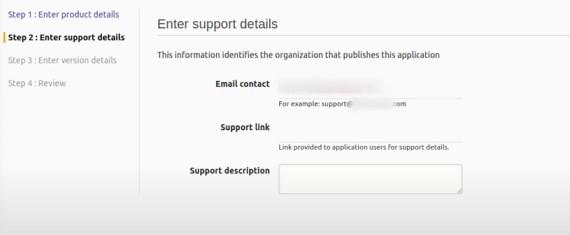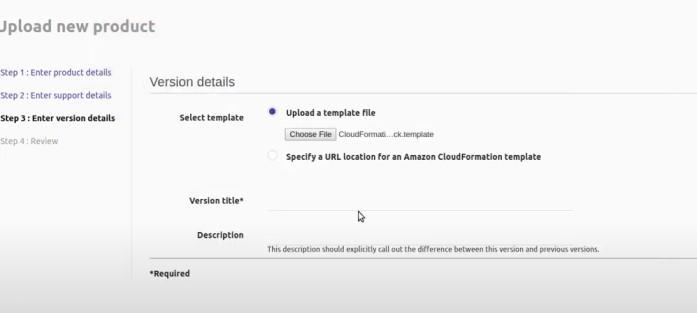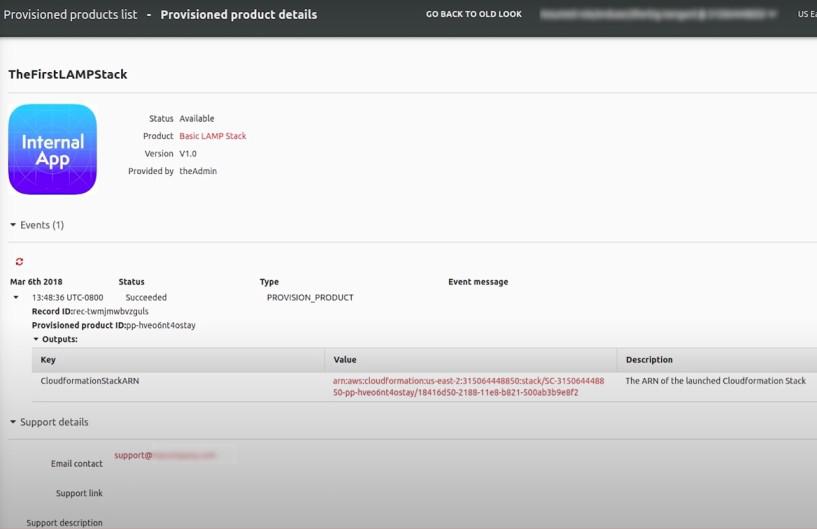What Is Service Catalog ? – AWS
Last Updated :
02 Apr, 2024
The AWS Service Catalog is the management and governance service within the AWS suite of cloud computing services. It can be frustrating to make sure everyone has the right level of access to the services they need especially if different roles and positions have different needs things get even more complex when administrators need to make sure everything is properly updated and compliant with security standards AWS Service catalog helps IT administrators organize and govern and distribute application stacks which we call products using cloudFormation templates they can then sets of products into folders that we call portfolios using permissions and constraints administrators can then give people called users the ability to self service discover launch and manage those products without needing direct access to the underlying AWS services or the AWS console AWS Service catalog simplifies organizing and governing of products.
Environment Setup For AWS Service Catalog: A Step-By-Step Guide
AWS Service catalog’s main goal is to provide users with the sets of products that they have permission to create and use without admin permission to create and use without an admin having to manually create each instance as the request comes a grouping of products is called a portfolio, and users will be given access to the portfolios which will then determine what products they can launch only admin can create and edit portfolios.
Now we need to follow the given steps
Step 1: Login as your admin account to create a portfolio and open up the AWS Service Catalog Console.
Step 2: Click Create Portfolios give your portfolio a name a description and the name of the person who manages the portfolio then click CreateSetup.

- You will be moved to the portfolio’s list page where you will be able to see your new portfolio in the portfolio list.
.jpg)
- Create a new product (Collection of Services) such as storage and databases that you want your users to be able to provision make sure you still log in as your administrator and navigate to the product list in the admin section.
Step 3: Click on upload new product and follow the steps in the wizard give your product a title and a description.

- After that enter the support details.

- You will be prompted to upload a cloudFormation template alternatively if you have a URL for your template you can use that as well confirm your choices and you are set head back to the portfolio ‘s list.
- Click the name of your new portfolio normally this would show all the products in your portfolios but it starts out empty.

Step 4: Click Add product to get a list of all your products choose the product you want to add by selecting the name and add product to portfolio (You can have as many as product you can have).

- Now we need to tell AWS Service catalog who can access what using the left side menu go back to the portfolio list click the name of portfolio to get the it’s detail page and scroll down to the user group and roles section.
Step 5: Click add user group or role and select the users groups and roles that should have access to the portfolios products click add access now our users should be able to provision new products on their own.
.jpg)
Step 6 : Log in to the different account as the user account permission to access my new portfolio so they should be ready to provision some products we will be navigate to the product list then select the product that you want to run click on launch product then follow the wizard to launch the product furthermore users can also terminate the products easily .

Features Of AWS Service Catalog
AWS Service Catalog offers a range of features that make it an essential tool for managing and provisioning applications within organization. Some of these basics features are as follows:
- Centralized Management And Distributed Products : It provides a single location where organizations can centrally manage which IT services and versions are available what is configured in each of the available service and who get permission access.
- Customization : AWS Service Catalog supports customization of products and configurations to meet specific organizational requirements and use cases.
- Version Control : It can easily manage different versions of applications performs any kind of roll back changes or test new updates without disrupting production environments.
- Portfolio Sharing : It promotes collaboration and reuse of approved resources. by sharing curated applications portfolio with other AWS account or within organizations.
- Integration with DevOps Tools: AWS Service Catalog seamlessly integrates with popular DevOps tools like AWS CloudFormation and AWS CodePipeline, enabling automated deployments and continuous delivery.
Best practices And Security Standards Of AWS Service Catalog
To maximize the benefits of AWS Service Catalog while ensuring security standard organizations should adhere to the following best practices and security standard.
- Standardize Product Offerings : Implement standardized product configuration and template within AWS Service Catalog to simplify deployment process and ensure uniformity across teams.
- Defining Clear Governance Policies : Establish comprehensive governance policies and standard for product portfolios to maintain consistency and compliance throughout the organization’s IT environment.
- Role Based Access Control: Utilize Role Based Access Control (RBAC) mechanisms to control access to AWS Service catalog resources, allowing only authorized users to provision and manage products according to their roles and responsibilities.
- Security Assessments : Conduct regular Security assessments and audits of AWS Service Catalog implements to identify and mitigate potential vulnerabilities, ensuring the ongoing security and integrity of the environment.
Leveraging AWS Service Catalog For Unified Software Provisioning Across Teams
As AWS Service Catalog offers a centralized solution for provisioning approved software resources across teams. Let’s consider a fictional company called “Tech Innovations Inc.” that provides software solutions to various clients. Here’s a use case illustrating how Tech Innovations Inc. could utilize AWS Service Catalog:
Tech Innovations Inc. has multiple development teams working on different projects for clients. Each project requires a specific set of AWS resources, such as EC2 instances, RDS databases, and S3 buckets. To streamline resource provisioning and ensure consistency across projects, Tech Innovations Inc. decides to implement AWS Service Catalog.
1.Initial Setup
- The IT department at Tech Innovations Inc. configures AWS Service Catalog with multiple product portfolios tailored to the needs of different development teams and projects.
- Each portfolio contains a curated selection of AWS resource templates pre-configured with recommended configurations, security settings, and compliance standards.
- The IT department defines launch constraints, such as tagging requirements and regional restrictions, to enforce governance and compliance.
2. Project Onboarding
- When a new project kicks off, the project manager requests access to the required AWS resources through the AWS Service Catalog.
- The project manager selects the appropriate product portfolio from the catalog, which includes resources optimized for the project’s requirements, such as development, testing, or production environments
- .The project manager provides necessary parameters, such as instance types, database sizes, and storage configurations, based on project specifications.
3. Resource Provisioning
AWS Service Catalog provisions the requested AWS resources automatically based on the selected product portfolio and provided parameters. Development teams gain access to provisioned resources through their AWS accounts, allowing them to start building and deploying applications without delay. Resource provisioning adheres to defined launch constraints and compliance standards, ensuring consistency and security across projects.
4. Self-Service IT
Development teams have self-service access to AWS resources through the AWS Service Catalog, reducing reliance on IT support and accelerating project timelines. Teams can easily browse the catalog, select the resources they need, and provision them on-demand, empowering them to innovate and iterate quickly.
5. Governance And Compliance
- IT administrators monitor resource provisioning and usage through AWS Service Catalog, ensuring adherence to organizational policies and security standards.
- Launch constraints, such as mandatory tagging and restricted regions, prevent unauthorized resource deployments and enforce compliance with regulatory requirements.
Key Benefits Of Using AWS Service Catalog
By implementing AWS Service Catalog, Tech Innovations Inc. achieves the following benefits:
- Standardized resource provisioning across projects, ensuring consistency and compliance.
- Self-service access to AWS resources, empowering development teams to innovate and iterate quickly.
- Governance and compliance enforcement, reducing security risks and ensuring regulatory compliance.
- Cost optimization through better visibility into cloud spending and informed resource provisioning decisions.
In summary, AWS Service Catalog enables Tech Innovations Inc. to streamline cloud resource provisioning, enhance governance and compliance, and optimize costs, ultimately driving innovation and delivering value to its clients more efficiently.
Conclusion
In summary, AWS Service Catalog revolutionizes IT governance by offering a structured approach to provisioning approved IT services. With a focus on compliance with corporate standards, AWS Service Catalog enables administrators to define pre-approved configurations, ensuring that only compliant resources are provisioned. Moreover, the self-service discovery and launch capabilities helps users to swiftly access pre-approved products and services, bypassing traditional procurement delays. This enhances agility and productivity within the organization.
Furthermore, AWS Service Catalog facilitates centralized management of products and services, allowing administrators to define and enforce governance policies. By distributing these resources across multiple AWS accounts and regions, organizations ensure consistent deployment and management while maintaining control and compliance. In essence, AWS Service Catalog serves as a comprehensive solution for managing IT resources, empowering organizations to maintain compliance, enhance user productivity, and centrally manage and distribute approved products and services.
AWS Service Catalog – FAQ’s
How Does AWS Service Catalog Address Security Concern?
- Integrating AWS Service Catalog with AWS Identity and Access Management (IAM) to control access to resources.
- Data at rest and in transit within AWS Service Catalog is encrypted using industry standard encryption algorithms.
- AWS Service Catalog complies with various industry standards and regulations, providing assurance of secure handling of data and resources.
How Does AWS Service Catalog Help Organizations Reduce Costs Associated With Provisioning And Managing AWS Resources?
AWS Service Catalog typically operates on pay-as-you-go pricing model. It is charged based on the resources provision through the service. By leveraging AWS Service Catalog, one can enhance their application provisioning process. Some Benefits of using AWS service catalog are as follows:
- Usage Tracking : With AWS Service Catalog, Organizations can easily track and manage resources, ensuring optimal utilization and cost effectiveness.
- Consistency And Compliance : Maintain control and ensure compliance by offering pre-approved resources and applications that adhere to organizational policies and security standards.
- Self-Service Provisioning : It promotes the users for the provision pre-approved applications and resources through an intuitive self-service portal, reducing dependency on IT teams.
Can AWS Service Catalog integrate With Existing ITSM tools?
Yes, AWS Service Catalog can integrate with existing IT Service Management (ITSM) tools such as ServiceNow and Jira Service Management. This enables Organizations to incorporate AWS Services into their existing IT workflows and service catalogs , providing a seamless experience for users and administers alike.
Is AWS Service Catalog Suitable For Organizations Of All Sizes , Or Is It Primarily Geared Towards Larger Enterprise?
Not just larger enterprises , AWS Service Catalog is suitable for organizations of all sizes. While larger enterprise may benefits from centralized management, compliance features offered by AWS Service Catalog small and medium-sized businesses (SMBs) can also leverage it’s capability to simplify and streamline the provisioning of IT resources. Irrespective of the fact whether an Organization is large , small or medium AWS Service Catalog can be a valuable tool for optimizing resource management , improving efficiency and maintaining control over IT spending on AWS.
Can We Customize The Aws Service Catalog To Fit The Specific Needs And Requirements Of An Organization?
AWS Service Catalog provides extensive customization capabilities that enables to tailor the catalog to meet the specific needs, requirements and preferences of an organizations. Whether it’s organizing products, defining parameters, enforcing constraints or integrating with other AWS services AWS Service Catalog empowers organization to create a customized solution that aligns with Organization ‘s goals and objectives.
Share your thoughts in the comments
Please Login to comment...